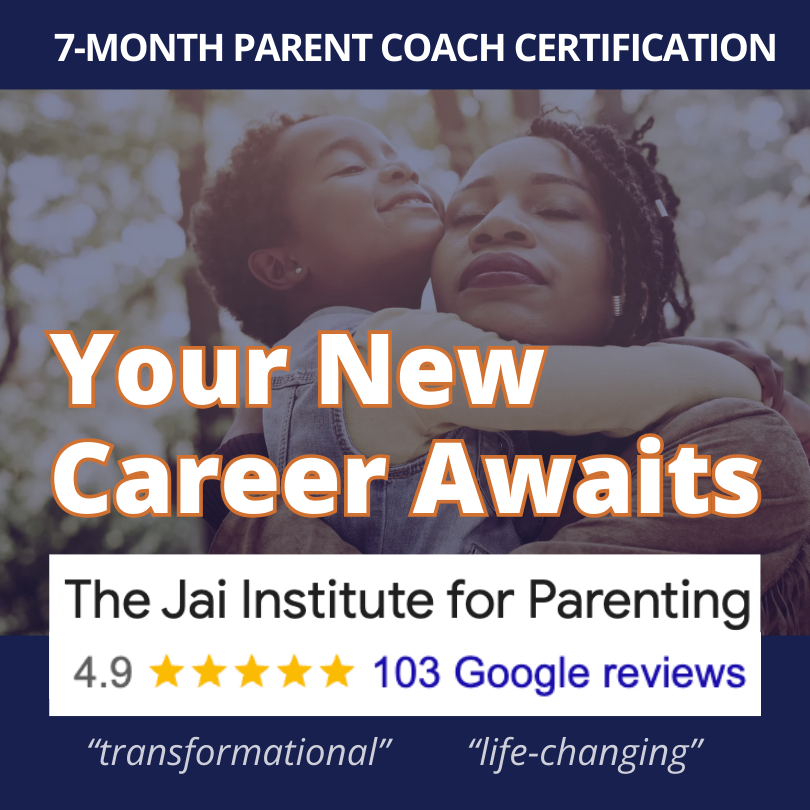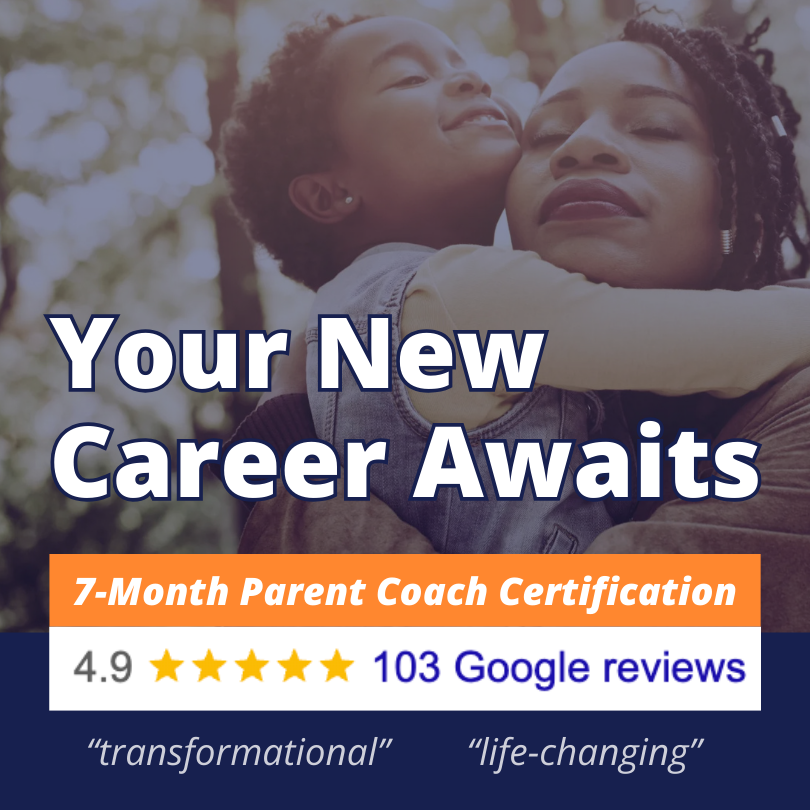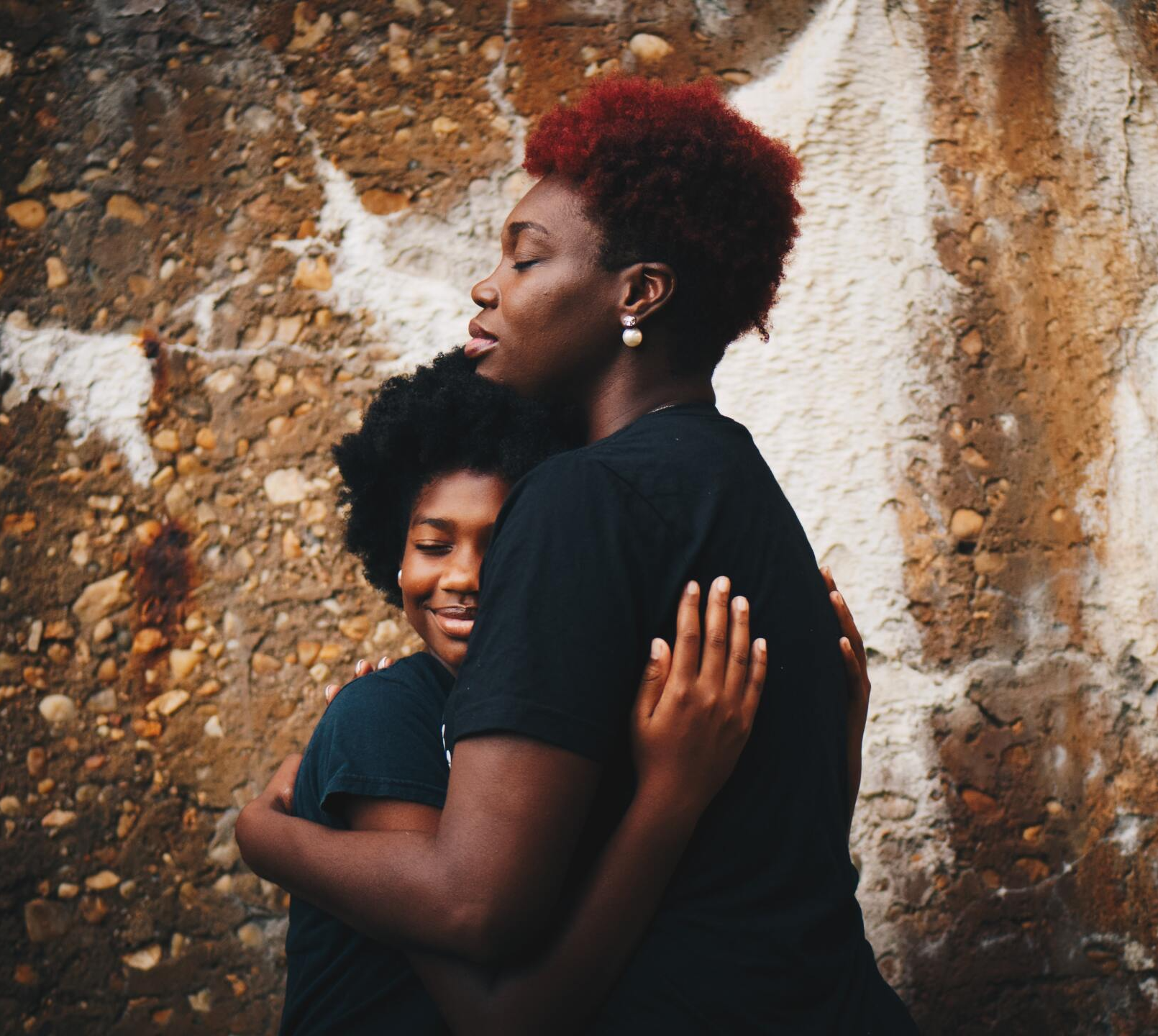5 Simple Tips for Parenting Without Yelling

Let’s be honest: expecting to parent without ever yelling is unrealistic. You’re human, you come into adulthood with generations of patterns built into you, and sometimes you can’t help but yell.
Let’s be optimistic: you can set intentions and develop skills that will reduce the frequency of your yelling. Research shows that
the effects of yelling at your child
are as harmful as spanking or hitting.
Although yelling doesn’t leave any physical marks, the emotional scars are real and can lead to more serious mental health issues and
chronic physical health issues
later in a child’s life.
How can you do the tough work of
parenting without yelling? How do you uphold boundaries or express your anger without yelling?
Let’s explore some simple ways to prevent and replace yelling in your daily parenting.
1) Breathe
Yes! You can stop yourself from yelling by breathing! Imagine you’re getting ready to yell across the room right now. What’s the first thing you do? You take a big inhale to fill your lungs. In the next split second you have a choice: yell something regretful or just let empty air flow out of your body.
You can use a variety of breathing techniques to dissipate the urge to yell in the moment. After that sharp inhale let out a slow exhale, all the way until your belly contracts, squeezing out the last molecules of air. Another option is to hold your big breath for a count of three, then release it and hold again for a count of three. Look at that: you just gave your brain more than six seconds to reevaluate the situation and create a better response.
If you need a stronger physical sensation to go with the breathing, try converting the yell into the “Ahhhhh” sound so you still get the verbal stimulation within your throat, but nobody gets the verbal assault of angry words.
When you catch yourself just long enough to stop the yell, you have the chance to bring your emotional volume down and communicate in a calmer way.
2) Name It
The phrase “name it to tame it” was coined by Dr. Daniel Siegel to help parents support children through emotional meltdowns. Guess what? If you feel the urge to yell, you are on the verge of an emotional meltdown!
You can “name it to tame it” when you feel a rush of anger ready to burst out of your mouth. Maybe you can’t turn down the volume, but you can choose your words. Verbalizing, “I’m so angry right now! My body is ready to explode and I need to get this anger out!” is a much better option than all the blame, shame, criticism, or judgment that may have pierced the air and your child’s sense of safety.
By naming your anger you teach your child that emotions can be big, and they can be strong, but they don’t have to be scary or take control of us.
You can feel angry and work your way through it, without hurting yourself or anyone around you.
As you name your emotion your body starts to calm itself down. This is actually the first step in
self-regulation, a critical parenting (and life) skill that develops with awareness and practice.
Labeling how you feel helps slow down the flow of stress hormones, and gives you the chance to reconnect with your whole brain and make rational decisions moving forward.
If you only incorporate these two strategies you will be well on your way to
parenting without yelling. But wait… there’s more!
3) Sing
Do you find yourself yelling when you’ve told your child a million times to do something, and they still aren’t responding? It looks like they’re being stubborn or lazy, it feels like defiance or disrespect, and it’s probably just a child who prefers to keep doing what they’re doing instead of switching tasks to do what you ask.
It’s truly astounding how children can filter out your loud voice and your repeated requests. Young children especially want to rebel at the first sign of power or authority. Fortunately, they’ll just as quickly join into what feels like playtime or a game.
Singing is an automatic signal that you’re feeling good and having fun, and it’s a welcoming invitation to cooperation. This is
the best way to get a toddler to listen without yelling. Instead of shouting “Get your shoes on!” you can put those words to the tune of “Frere Jacques” or “The Farmer in the Dell.” Singing is a simple way to bring playfulness into mundane or routine situations.
Singing will not only
increase your happiness hormones, it will invite your child to connect with you in laughter and joy, rather than resentful compliance. And don’t worry, you don’t have to sing like Adele or John Legend to entice your kids; just be bold and they’ll think you’re amazing.
4) Show
Believe it or not, children are constantly learning by observing, not by listening to instructions. Don’t let your child’s verbal skills and language development trick you into expecting them to listen and follow through with any task. They need to see what to do, they need to do it with you many times, and even after they master a skill they will occasionally need you for encouragement, motivation, and support.
When you hear yourself yelling to
Hurry up!, or
Do it by yourself! and your child responds by going even slower or turning into a wet noodle, it’s time to get closer and get your hands involved.
Instead of yelling, turn yourself into Tarzan, and use single words to describe the step-by-step instructions as you demonstrate with your own hands. “Shirt” (as you point to the crumpled clothing on the floor). “Head” (as you guide your child to pull the shirt over their head). “Arms” (as you help navigate hands through the sleeves). When the task is complete, regardless of how independently it was accomplished, celebrate the success with a high-five or hug, and continue on your way.
This strategy works just as well for 2-year-olds as it does for 12-year-olds. Fewer words equals less stimulation, which leads to more responsiveness and cooperation.
5) Know Yourself
There’s a generations-old cultural belief that children need parents to mold them into successful adults by rewarding desired behavior and punishing bad behavior. The reality is that children will become successful in their own unique ways through the loving presence of parents with clear values and consistent communication. You get to simply be yourself, and that is enough to teach your children how to be themselves as they grow up.
Of course there’s a catch: are you
modeling
what you want for your children? This is an opportunity for growth.
If you want to
stop yelling at your kids, first you need to pay attention to all the times when you are yelling. Do you lose your cool at the end of a long day? Do you snap back when you’re interrupted? Do you flip your lid when your child pushes a button one too many times?
You have the power to shift any scenario, when you choose to know yourself.
Once you notice the pattern of your yelling you can make a plan to change it.
The plan can be as simple as: “Even though his whining drives me crazy, I choose to see it as a call for help, not a personal attack.” Your plan might include requesting ten minutes of alone time between finishing your work day and starting family time. Your plan can be expressing to your family how much you desire to be heard without interruption, with loving reminders to support each other in honoring this.
To know yourself is also to forgive yourself. Remember:
there is no perfect parenting. There is no expectation to
never
yell again.
Knowing yourself means accepting that you are beautifully imperfect, honoring the fact that you’re doing the best you can in any moment, and preparing yourself every day for the best chance of success. You’ll mess up. We all do. Know that it’s part of the journey and you get to keep going.
Before you head back to your parenting world, choose one of these strategies to try out within the next day. You know it’s coming, that moment when something’s got to give. Be ready to
breathe
into it. Allow yourself to
name
it for what it is. Surprise yourself by
singing
rather than yelling. Slow everything down and
show
how to do it. Find the pattern so you
know
how to create a new plan. Yelling doesn’t have to be the norm. You can choose to parent peacefully.
This is just one of many generational patterns that empowered parents are shifting in their families right now. You can join the movement by
becoming a certified parent coach
today.
Meet Your Author, Allyn Miller
Allyn is a recently certified Jai Parenting Coach and an experienced early childhood teacher.
She has seen the positive impact that happens when parents embrace their role as their child’s first teacher, and is on a mission to empower every parent who desires to create peace in their home. She has lived and traveled around the globe and also believes that peaceful parenting is an essential path to a more peaceful world.
Allyn currently lives in Weston, Florida with her husband and two children.
READ MORE:
Curious for more?














